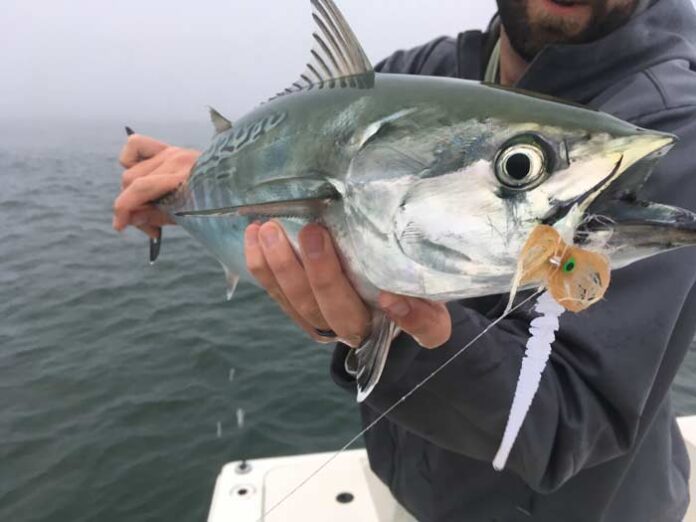Welcome to the latest installment of the Wednesday Wake-Up Call, a roundup of the most pressing conservation issues important to anglers. Working with our friends at Trout Unlimited, Backcountry Hunters & Anglers, the Theodore Roosevelt Conservation Partnership, The Everglades Foundation, Captains for Clean Water, VoteWater.org, and Conservation Hawks (among others), we’ll make sure you’ve got the information you need to understand the issues and form solid opinions.
1. Calls for More Management of Atlantic Saltwater Species Stall
Last week, we told you about the exciting win for striped bass at the meeting of the Atlantic States Marine Fisheries Management Commission’s Striped Bass Board, which took action to protect the last good year-class of fish. You can get a full breakdown of the new regulations Here: ASMFC Spring 2023 Meeting Recap: Historic Action on Striped Bass. But there was was also some not-so-great news about false albacore and bonito. Folks from the American Saltwater Guides Association pushed hard for more studies and increased management of these species, but individual states could not agree on a course of action. Putting simple management in place is a heck of a lot easier than reactive, crisis management.
Click here for the full story on the ASGA website
2. Plan to Transport Oil by Rail Along Colorado River Spurs Lawsuit
The proposed Uinta Basin Railway is set to carry Uinta Basin crude along new track following the Colorado River through western Colorado and then through metro Denver. A lawsuit filed by Eagle County and another filed by five environmental groups challenge the Surface Transportation Board’s December 2021 approval of the new railroad. The county and groups’ lawsuits argue that the environmental review of the railroad under the National Environmental Policy Act failed to consider its impact on the Colorado River, endangered fish and downstream communities.
Click here for the full story on coloradosun.com
3. How Dams Complicate Fish Migration
Most anglers know that dams are bad for migratory fish, but do you really understand why? Here’s an educational article from Trout Unlimited.
Anadromous fish have it rough. Not only do these fish swim miles and miles from their natal streams out to the ocean to grow while surviving its many predators and then swim all the way back to spawn, but we also throw dams in their way to further complicate their lives. And despite huge investments to make dams more ‘fish friendly’, dams continue to block the downstream passage of fish and their offspring, ultimately leading to ecological traps and hampering efforts to restore populations.
Haley Ohms, one of TU’s science team members conducted a study while at her previous employer, University of Santa Cruz, that showed the different ways in which dams and their reservoirs can hinder downstream passage. In conjunction with NOAA’s Southwest Fisheries Science Center, Monterey Peninsula Water Management District and others, Ohms and her team found four issues with downstream passage at a dam for steelhead on the Carmel River on the central-California coast.
Click here to read more at tu.org
4. Does Advertising Help with Conservation?

A few weeks ago, we told you about a delegation of Everglades advocates–including Orvis, Everglades Foundation, Captains for Clean Water, Everglades Trust, and Sanibel-Captiva Conservation Foundation–which traveled to Washington D.C. to explain to policymakers the importance of Everglades Restoration. As part of the effort, Orvis took out a full-page ad (above) in the Wall Street Journal the day before, so the issues would be top-of-mind for the policymakers the group met with.
But do ads like this really have any effect? I asked Laura Schaffer, Orvis Vice President of Sustainability and Conservation, and she shared with me a note she received from Bradley Watson, the Everglades Foundation’s Vice President of Policy & Engagement:
I felt like we executed a very effective and super well-timed trip to the Hill. The teamwork and narrative was right on. The complementary advertising and outreach by Orvis was above and beyond, and I know made a significant impact. I worked on the Hill for nearly a decade, and have advocated to them for another decade, and have never been in a meeting where the WSJ was used in such a fashion. Plus the digital presence as well. Sticking in the minds – especially of the appropriations staff – is a huge leg up when they have to make hard decisions later.”
Click here for the full recap of the trip to the Hill
Credit: Source link































